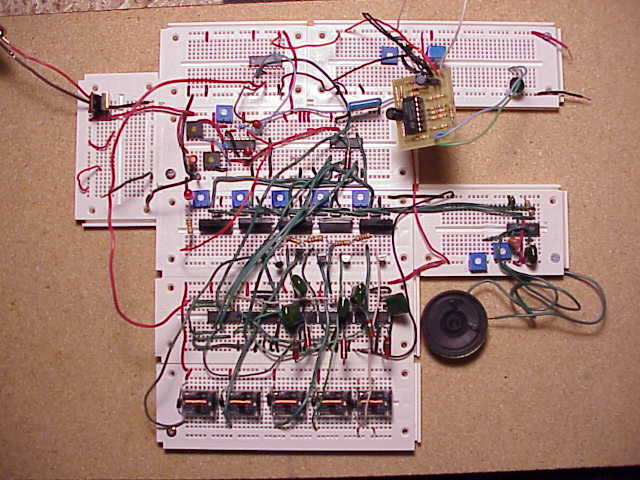This information is provided "as is" without warranty or any kind, either expressed or implied, including, but not limited to, the implied warranties of merchantability, fitness for a particular purpose, or non-infringement. In no event shall RehabEngineer.Homestead.com or Michael Papp be liable for any direct, indirect, incidental, punitive, or consequential damages of any kind whatsoever with respect to the service, the materials and the products referenced in these documents. This applies to all pages on this web site.
 The 5 count timer runs until the monostable timer times out. It is set to time out after the last tone has finished, but before the first tone starts again.
The 5 count timer runs until the monostable timer times out. It is set to time out after the last tone has finished, but before the first tone starts again.
How it works:
A separate microphone is plugged into the device. The microphone can be position in an appropriate location to detect sound. The microphone feeds sound into an voice activated switch (VOX) (see figure 3). This switch reponds to frequencies in the human voice range or hand claps. When a sound is passed, a mono-stable timer enables a 5 counter circuit to start scanning selections for a predetermined time (a pot adjusts the length of time). The output signal of the 5 counter goes to a line driver. From the line driver output drives a relay which activates an audio circuit built with a 556 timer, and one input of an AND gate. The relay adds different resistances into the circuit, modulating the frequency of the tone produces. When the tone corresponding to the desired selection is made, the user makes another noise in the appropriate frequency range for the VOX. The signal is passed to the other input of the AND gate. When both inputs are high, the AND gate sends a signal to a J-K flip-flop latch that turns a relay on or off. The relay switches AC current, and any device hooked up to the relays output is activated or deactivated.

